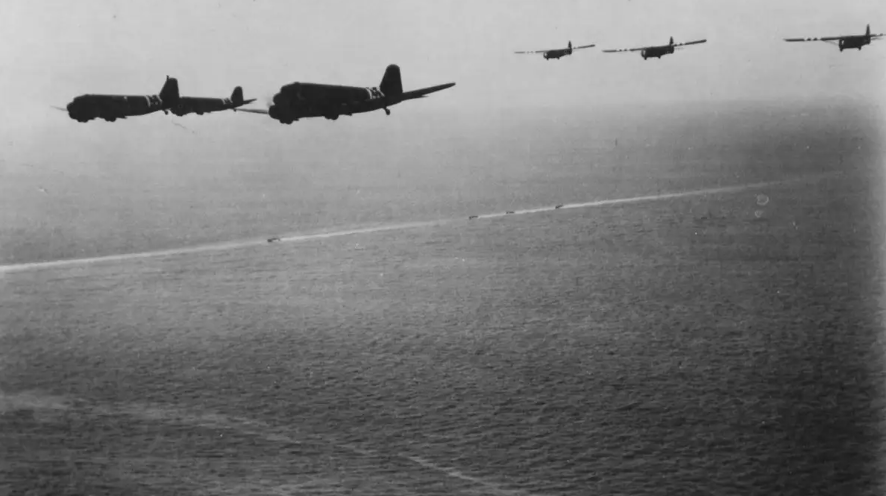The 80th Anniversary of D-Day
June 6 marks the 80th anniversary of the Allied invasion of Normandy, France, in 1944. Code-named Operation Overlord, it was a massive logistical effort involving nearly 156,000 American, British, Canadian, free…

On D-Day, Douglas C-47 troop carrying plans of the 9th AF, towing gliders loaded with airborne infantry are on the way to the French coast to participate in the initial assault behind enemy lines. [Image Courtesy: National Archives and Records Administration]
June 6 marks the 80th anniversary of the Allied invasion of Normandy, France, in 1944. Code-named Operation Overlord, it was a massive logistical effort involving nearly 156,000 American, British, Canadian, free French, and Polish troops landing on five beaches along the coast of France.
The invasion required advances in engineering and logistical planning as well as coordination of thousands of troops, ships, and aircraft to make it work.
To mark the 80th anniversary of D-Day, which many historians see as the beginning of the end of World War II (although some of the fiercest fighting in Europe would continue for another 11 months), the Commemorative Air Force (CAF) and other groups have flown vintage WWII aircraft to Europe to participate in the event.
The CAF's C-47s That's All, Brother and Ready 4 Duty are participating in flyovers and airshows in France. The C-47, a militarized version of the DC-3, was critical in the D-Day invasion. The aircraft carried paratroopers and towed gliders.
D-Day was initially planned for May 1, but was delayed by poor weather until June 6. It was a logistical feat like no other, with the largest armada ever to take to the sea launched across the English Channel. Air cover was provided by an estimated 13,000 aircraft, ranging from bombers, transports, and fighters—all headed to France.
The invasion was executed in five phases, beginning with the midnight drop of 23,400 Allied paratroopers into Normandy. Their mission was to secure access from the beaches inland.
The next phase began at 0100 with the Allies faking an invasion at the Pas de Calais, 150 miles northeast of Normandy.
At 0300 Allied aircraft began a bombardment of German defenses in the area, and at 0500 a naval shelling commenced.
At 0600 the Allied troops, a total of 129,400, began to land on the beaches of Normandy.
Today, there are few of these original aircraft left, but there are many of these WWII transports, fighters, and gliders making the airshow and fly-in circuits sporting the distinctive black and white stripes that adorned the aircraft that participated in D-Day.
If you have been lucky enough to hear a veteran of D-Day talk about the experiences, one of the first things they will tell you is that the black-and-white striping was done as a temporary measure.
The stripes, 18 inches wide on single-engine aircraft and 24 inches wide on multiengine aircraft, were placed on the wings and around the fuselage so they could be quickly identified as friendlies and not shot down.
According to those who painted the stripes on the aircraft (and gave the informational talks at EAA AirVenture in the Warbird area), the work was done quickly, quietly, and at the last minute lest the German Luftwaffe find out about the special markings. The paint jobs were not supposed to last long—some of the stripes were allegedly done with whitewash and shoe polish. Military brass ordered the stripes to be removed by December 1944.
Editor's note: This story originally appeared on flyingmag.com.

Subscribe to Our Newsletter
Get the latest Plane & Pilot Magazine stories delivered directly to your inbox






